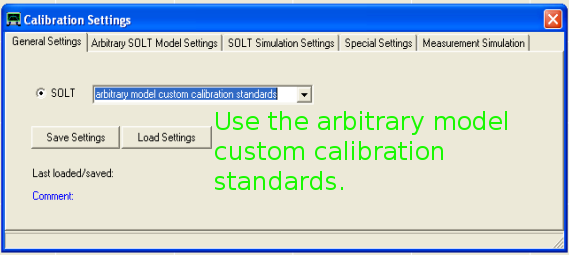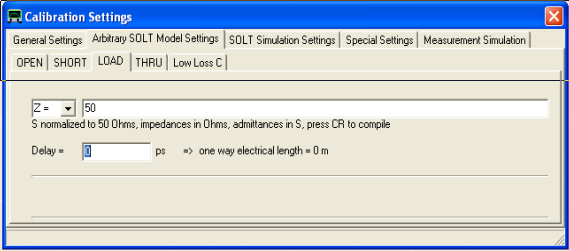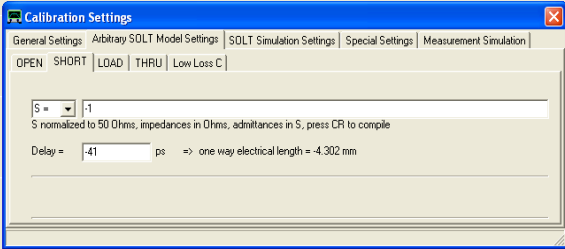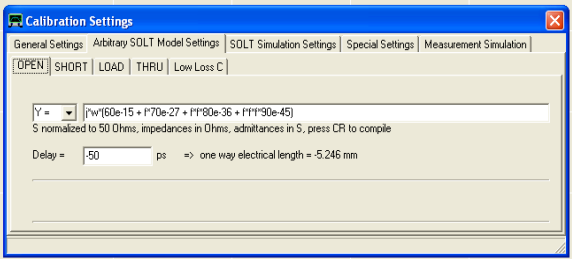
All our coaxial calibration kits can be used with the VNWA from SDR-kits. In fact Kirkby Microwave own a VNWA, in addition to several higher end VNAs. The VNWA supports three calibration models:

This model is very flexible, but is not as easy to use as other VNAs. The calibration standards are represented as a mathematical model, which can be expressed as either S-parameters (S), an admittance (Y) or as an impedance (Z).

For the load use the impedance, and enter a value of 50. Our loads are characterized for a low reflection coefficient from DC up the maximum frequency of the calibration kit. Do not use the DC resistance, as SDR-kits suggest. Despite having a calibrated HP 3457A 6.5 digit multimeter, with support for 4-wire resistance measurements, we do not measure the DC resistance, and suggest this is not done, even if you have a suitable bench multimeter. This is because the DC resistance tells you nothing about how the device acts at RF frequencies. Set either S=0 or Z=50 for the load. Just set the delay to 0, as that's irrelevant. Press carriage return to compile the data entered.
Set either Z=0 or S=-1 for the short. Set the delay to the NEGATIVE value of the of the standard in the Kirkby Microwave kit. Typical values that would need setting would be from -75 ps to 0 ps, depending on the model of kit, and the gender of the calibration standard.

The open standard is the most complicated to define. It is possible to compute the S-parameters, impedance or admittance of the open standard, but using the admittance is easiest. The open standard has a fringing capacitance C, which is frequency dependent. The admittance of a capacitor is:
Y=j*ωC where j=sqrt(-1) and ω = 2*πf
The fringing capacitance of the open calibration standards follows the method used by almost all VNA manufacturers - a 3rd order polynomial.
Cfringing=C0x10-15 + C1x10-27f + C2x10-36f2+C3x10-45f3 farads, where f is in Hz.
If a kit had an offset delay of 50 ps, and the fringing coefficients were C0=60, C1=70, C2=80 and C3=90, the admittance would be written in the VNWA as below, where the VNWA uses w instead of ω
Y=j*w*(60e-15 + f*70e-27 + f*f*80e-36 + f*f*f*90e-45)

Kirkby Microwave Ltd is registered in England and Wales, company number 08914892. Registered office: Stokes Hall Lodge, Burnham Rd, Althorne, Essex, CM3 6DT.